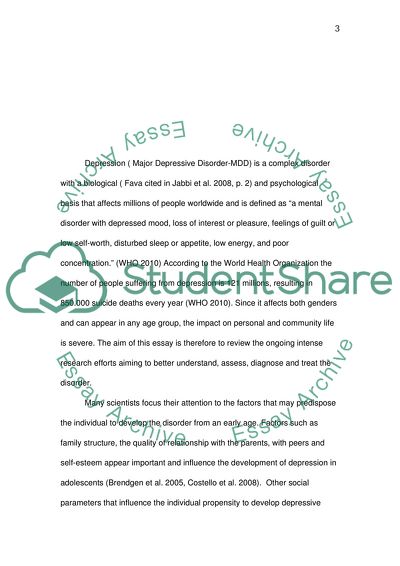Cite this document
(Psychoneuroendocrinology: the Story of Depression Literature review Example | Topics and Well Written Essays - 1250 words, n.d.)
Psychoneuroendocrinology: the Story of Depression Literature review Example | Topics and Well Written Essays - 1250 words. https://studentshare.org/psychology/1736162-assessment-and-diagnosis-in-mental-health-literature-review-master-of-mental-nursing
Psychoneuroendocrinology: the Story of Depression Literature review Example | Topics and Well Written Essays - 1250 words. https://studentshare.org/psychology/1736162-assessment-and-diagnosis-in-mental-health-literature-review-master-of-mental-nursing
(Psychoneuroendocrinology: The Story of Depression Literature Review Example | Topics and Well Written Essays - 1250 Words)
Psychoneuroendocrinology: The Story of Depression Literature Review Example | Topics and Well Written Essays - 1250 Words. https://studentshare.org/psychology/1736162-assessment-and-diagnosis-in-mental-health-literature-review-master-of-mental-nursing.
Psychoneuroendocrinology: The Story of Depression Literature Review Example | Topics and Well Written Essays - 1250 Words. https://studentshare.org/psychology/1736162-assessment-and-diagnosis-in-mental-health-literature-review-master-of-mental-nursing.
“Psychoneuroendocrinology: The Story of Depression Literature Review Example | Topics and Well Written Essays - 1250 Words”. https://studentshare.org/psychology/1736162-assessment-and-diagnosis-in-mental-health-literature-review-master-of-mental-nursing.


